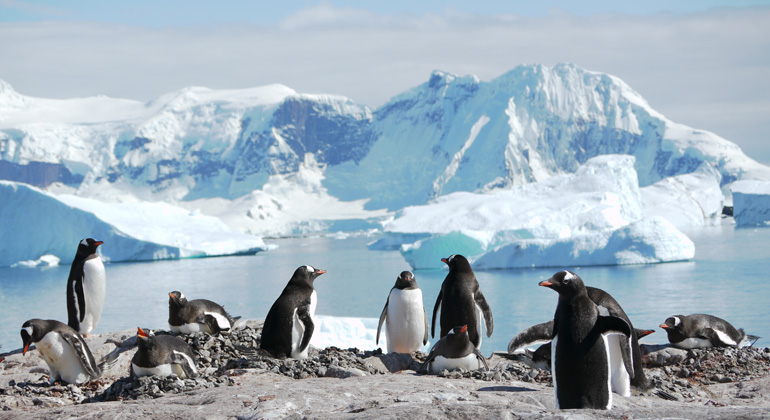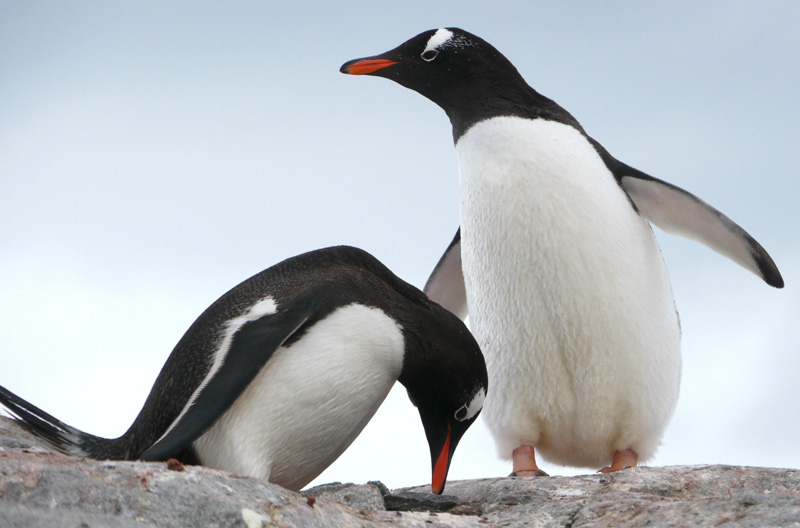New study looks at risk to Antarctic marine life in future
A new study of the animals living in polar oceans reveals which are most at risk from climate change. The study is published today (17 January) in Frontiers in Marine Science.
A team of scientists from British Antarctic Survey carried out a risk assessment, similar to one used for setting occupational safety limits in the workplace, to identify marine species that will win and lose as a consequence of climate change in Antarctica.
Risk factors were established based on the expected impacts of climate change and included temperature rise, sea-ice reduction and changes in food availability. Twenty seven marine species were considered in this assessment to give an overview of how Antarctic marine biodiversity may alter.
They found that animals closely associated with sea ice for food or breeding, such as humpback whale and several species of penguin, are most at risk from the predicted effects of climate change. Seafloor predators like starfish and sea urchins and open-water feeding animals such as jellyfish will benefit from the opening up of new habitats and food supplies.
Antarctic krill (Euphausia superba), shrimp-like crustaceans whose young feed on the algae growing under sea ice, were categorised as vulnerable. This directly affects animals such as Adèlie and chinstrap penguins and humpback whales, who rely on krill as a large part of their diet. Emperor penguins were classed as high risk because they breed on sea ice and ice shelves.
Lead author, marine biologist Dr Simon Morley from British Antarctic Survey, says:
“One of the strongest signals of climate change in the Western Antarctic is the loss of sea ice, receding glaciers and the break-up of ice shelves. This will affect shallow waters first, challenging the animals who live in this habitat in the very near future. While we show that many Antarctic marine species will benefit from the opening up of new areas of sea floor as habitat, those associated with sea ice are very much at risk.”
Seabird ecologist Mike Dunn, co-author of this study continues:
“The southern right whale feeds on copepods, a plankton group associated with open water. Therefore, as ice shelves shrink and sea ice decreases in volume, this species of whale is likely to benefit. Salps and jellyfish are likely to benefit too.”
Other winners include bottom-feeders, scavengers and predators, such as starfish, sea urchins and worms.
Dr David Barnes, marine biologist and co-author of this research explains:
“Many of these species are robust pioneers which returned to the shallows after the end of the last glacial maximum, 20-thousand years ago. These species are likely to benefit from the opening of new habitats through loss of sea ice and the food from new micro-algal blooms this will provide.
Even if, as predicted for the next century, conditions in these shallow-water habitats change beyond the limits of these species, they can retreat to deeper water as they did during the last glacial maxima. However, temperature-sensitive animals with calcium shells were scored as the most at risk if this happens.”
Dr Morley concludes:
“The next step is to assign weights to the factors and predicted impacts. For example, temperature is a factor that has major effects on cold-blooded marine animals, but will it be more of a problem than the benefit from loss of sea ice? It is very difficult to know until we have more data.”
- Read the paper here.
- Predicting which species succeed in climate-forced polar seas by Simon A. Morley, David K. Barnes and Michael J. Dunn is published in Frontiers in Marine Science.









